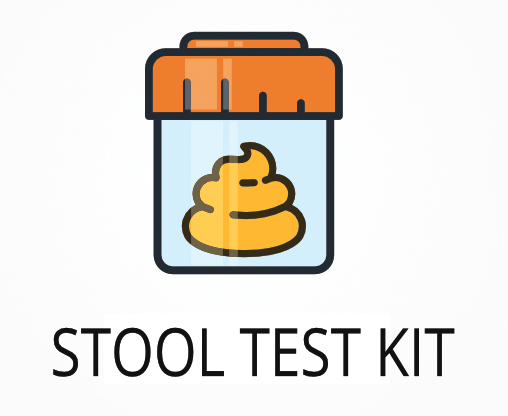Ordering the GI360 Profile | Doctor’s Data | Canada
The GI360 Profile by Doctor’s Data is a comprehensive stool analysis that helps identify bacteria, viruses, parasites, and markers of gut inflammation. This test is often ordered to help pinpoint the root causes of digestive symptoms like bloating, diarrhea, constipation, and abdominal pain, as well as to assess gut flora balance and inflammation. Interestingly, this test can also detect subtle changes in gut bacteria that may be linked to joint pain and autoimmune conditions.
Ordering the GI360 Profile provides specific benefits:
- Detects hidden infections and imbalances in gut bacteria, yeast, and parasites
- Measures markers of gut inflammation, including calprotectin and lactoferrin
- Assesses digestive function by analyzing fat, carbohydrate, and muscle fiber breakdown
- Identifies markers of leaky gut and mucosal barrier dysfunction
- Provides actionable data for targeted nutrition and supplement plans
Who Should Consider Comprehensive Gut Microbiome Testing
People who have ongoing digestive issues, such as frequent bloating, loose stools, or unexplained stomach pain, may benefit from this test. For example, someone who has tried multiple diets and supplements for years without relief from their digestive symptoms may find answers through this type of stool analysis.
Ordering this test may also be helpful in these situations:
- Persistent fatigue that has not improved with sleep or lifestyle changes
- Recurring yeast infections or suspected Candida overgrowth
- Unexplained skin rashes or eczema that flare up after eating certain foods
- Difficulty maintaining a healthy weight despite dietary changes
- Joint pain that seems to worsen after digestive upset, which can be linked to gut bacteria imbalances
This test is recommended for those who want to identify the specific causes of digestive symptoms, food reactions, or gut-related inflammation. Delaying this type of analysis can allow gut imbalances to persist, which may make symptoms harder to resolve over time.
How to Prepare for Stool Microbiome and Digestive Function Testing
Fasting is not required for this stool test, but you may need to avoid certain foods or supplements as directed before collecting your sample. Always follow the instructions provided by your doctor or healthcare practitioner to make sure your sample is collected correctly and your results are as useful as possible.
Labs Included When Ordering Your GI360 Profile
| Test Name | Reference Range | What This Marker Means | Low and High Levels of This Marker |
|---|---|---|---|
| Acetate | 15-60 | Acetate is a short-chain fatty acid made by gut bacteria during fiber breakdown. It supports colon health and helps regulate inflammation. | High levels mean increased fermentation or bacterial overgrowth.
Low levels mean reduced fiber intake or low beneficial bacteria. |
| Additional pathogens culture | None detected | This test checks for harmful bacteria, viruses, and parasites not found in standard cultures. It helps identify hidden infections causing digestive symptoms. | High levels mean presence of infection or overgrowth.
Low levels mean no additional pathogens detected. |
| Bacteriology culture, aerobic | No growth or normal flora | This culture identifies aerobic bacteria in the stool, helping to detect imbalances or infections that may cause symptoms. | High levels mean possible infection or dysbiosis.
Low levels mean reduced beneficial bacteria or normal findings. |
| Beta-Glucuronidase | < 4,000 | Beta-Glucuronidase is an enzyme from gut bacteria that can affect hormone recycling and toxin removal. High levels may impact estrogen metabolism. | High levels mean increased risk of hormone imbalance or toxin buildup.
Low levels mean less enzyme activity, which is usually not a concern. |
| Butyrate | 2-10 | Butyrate is a short-chain fatty acid that nourishes colon cells and helps control inflammation. It is made by beneficial gut bacteria. | High levels mean increased fermentation or bacterial imbalance.
Low levels mean low fiber intake or reduced beneficial bacteria. |
| Calprotectin | < 50 | Calprotectin is a protein released during gut inflammation. It helps detect inflammatory bowel conditions and monitor disease activity. | High levels mean active inflammation, possibly from IBD or infection.
Low levels mean no significant inflammation present. |
| Carbohydrates | Negative | This marker checks for undigested carbohydrates in stool, which can signal problems with digestion or absorption. | High levels mean poor carbohydrate digestion or enzyme deficiency.
Low levels mean normal digestion of carbohydrates. |
| Elastase | > 200 | Elastase is a digestive enzyme from the pancreas. It helps break down proteins and is a marker of pancreatic function. | High levels mean rapid transit or inflammation.
Low levels mean reduced pancreatic enzyme output. |
| Fat Stain | Negative | This test checks for undigested fat in stool, which can indicate problems with fat digestion or absorption. | High levels mean fat malabsorption or enzyme deficiency.
Low levels mean normal fat digestion. |
| GI Pathogens 12-25 target PCR | None detected | This PCR test screens for a wide range of bacteria, viruses, and parasites that can cause digestive symptoms. | High levels mean presence of infection.
Low levels mean no pathogens detected. |
| Lactoferrin | < 7.25 | Lactoferrin is a protein released during gut inflammation. It helps identify inflammatory bowel disease and infections. | High levels mean active inflammation or infection.
Low levels mean no significant inflammation. |
| Lysozyme | < 600 | Lysozyme is an enzyme released by white blood cells during inflammation. It helps detect gut inflammation and infection. | High levels mean active inflammation or infection.
Low levels mean no significant inflammation. |
| Microbiome Abundance PCR | Within normal range | This test measures the diversity and balance of gut bacteria using PCR technology. It helps identify imbalances linked to digestive symptoms. | High levels mean overgrowth of certain bacteria.
Low levels mean reduced diversity or low beneficial bacteria. |
| Mucus | Negative | Mucus in stool can signal irritation or inflammation in the digestive tract. | High levels mean gut irritation or inflammation.
Low levels mean no mucus detected. |
| Muscle Fibers | Negative | This marker checks for undigested muscle fibers, which can indicate problems with protein digestion or enzyme function. | High levels mean poor protein digestion.
Low levels mean normal protein digestion. |
| Occult Blood | Negative | This test checks for hidden blood in stool, which can signal inflammation, infection, or other digestive issues. | High levels mean bleeding in the digestive tract.
Low levels mean no blood detected. |
| Parasitology, concentrate | None detected | This test looks for parasites in stool using a concentration method, helping to identify infections that may cause symptoms. | High levels mean presence of parasites.
Low levels mean no parasites detected. |
| Parasitology, trichrome | None detected | This test uses a special stain to find parasites in stool, which can help explain digestive symptoms. | High levels mean presence of parasites.
Low levels mean no parasites detected. |
| Propionate | 5-20 | Propionate is a short-chain fatty acid made by gut bacteria. It helps regulate inflammation and supports gut barrier function. | High levels mean increased fermentation or bacterial imbalance.
Low levels mean low fiber intake or reduced beneficial bacteria. |
| Red Blood Cells | None detected | Red blood cells in stool can signal bleeding or irritation in the digestive tract. | High levels mean bleeding or injury in the gut.
Low levels mean no red blood cells detected. |
| Valerate | 0.5-2.5 | Valerate is a short-chain fatty acid produced by gut bacteria. It helps maintain gut barrier function and supports healthy digestion. | High levels mean increased fermentation or bacterial imbalance.
Low levels mean low fiber intake or reduced beneficial bacteria. |
| Vegetable Fibers | Negative | This marker checks for undigested plant fibers, which can indicate problems with digestion or enzyme function. | High levels mean poor fiber digestion.
Low levels mean normal fiber digestion. |
| White Blood Cells | None detected | White blood cells in stool can signal inflammation or infection in the digestive tract. | High levels mean active inflammation or infection.
Low levels mean no white blood cells detected. |
| Yeast culture | None detected | This test checks for yeast overgrowth, such as Candida, which can cause digestive symptoms and other issues. | High levels mean yeast or Candida overgrowth.
Low levels mean no yeast detected. |
| ph | 6.0-7.5 | Stool pH measures acidity in the gut. It helps assess digestion and the balance of gut bacteria. | High levels mean alkaline stool, which may signal low beneficial bacteria.
Low levels mean acidic stool, which may signal carbohydrate malabsorption. |
| sIgA | 510-2040 | Secretory IgA is an immune protein in the gut. It helps protect against infections and supports gut barrier function. | High levels mean active immune response or infection.
Low levels mean reduced gut immune defense. |
Reference ranges may change slightly as labs update their methods and standards.
GI360 Profile FAQ
Is there GI360 Profile testing near me?
This is a test kit that you can collect at home, and you can check the draw location link at the top of the page for more details. For those dealing with ongoing digestive symptoms, having a convenient way to collect your sample locally makes the process easier and helps you get answers faster.
How do I interpret the test results?
While your treating physician should review your results, we also offer a one-on-one test results review with our clinical team to help you understand your results and next steps.
What is the cost of the test?
The price listed for the GI360 Profile includes standard shipping to you and return shipping to the lab, but draw fees may apply. Ordering this test can help you identify the specific cause of your digestive symptoms, which may help you find relief more quickly.
How often should I retest?
Retesting is usually recommended every 6-12 months, especially if you are making changes to your diet or treatment plan, to track improvements or new changes in your gut bacteria and inflammation markers.
How accurate is the test?
The GI360 Profile uses PCR technology and advanced culture methods for detecting bacteria, viruses, and parasites, with a specificity of 98% and sensitivity of 97%. TrueHealthLabs.com partners with CLIA-certified and CAP-certified laboratories to uphold rigorous testing standards for dependable results.
Important Notes
- The test can be mailed and collected in Canada.
- You will be responsible for the shipping costs. This includes the mailing of the kit to Canada and returning your samples to the lab.
- Use a 2-day return mailer.
Medical Review Board
Reviewed by Jeff Donohue M.D. from Body Logic and Brady Hurst DC, CCCN. Written by True Health Lab’s team of editorial health contributors.
Disclaimer: This information is for educational purposes only and not intended as medical advice. Consult your healthcare provider for personalized guidance.
Why Customers Trust True Health Labs - What People are saying
Also rated 4.6 out of 5 based on 3452 ShopperApproved reviews- See all TrueHealthLabs.com reviews.






